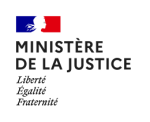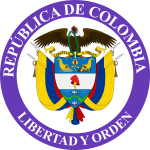Installations and equipment for conferences, simultaneous interpreting systems
Simultaneous interpreting equipment: rental, support and recommendations
Since 2008, SMG Languages has been creating audiovisual installations for events and is specialized in the supply of simultaneous interpreting equipment, also known as ‘conference systems’.
What are simultaneous and conference interpreting?
Simultaneous interpreting consists of real time spoken translation without interrupting the speaker. This special technique requires interpreters to use both lobes of the brain to simultaneously listen to, understand, translate and reproduce what is said. Interpreters work inside special soundproof booths and listen through headsets in order to hear the speaker clearly and without distraction.
Today, the words of simultaneous interpreters are transmitted to the audience in the room, or even connected remotely, using modern interpreting systems and specific audio-visual installations: SMG Languages offers its clients, in Italy and abroad, preliminary technical consultations, the latest equipment and the support of experienced technicians and interpreters.
All the equipment and services offered by SMG for remote interpreting
- Simultaneous interpreting system rental.
- Technical services for simultaneous interpreting around the world, using local personnel or other trusted staff in transfer.
- Special installations for simultaneous interpreting at conferences in historical locations with architectural constraints or hard to access.
- Solutions for multilingual simultaneous interpreting systems, useful for translation to and from multiple languages.
- Systems for video conference interpreting and live speech translation.
- Solutions for telephone interpreting.
- Mobile simultaneous interpreting, for guided tours, using portable systems known as bidules or infoports.
Qualified interpreters
In addition to technical equipment, SMG Languages provides qualified interpreters with several years’ experience. From official parliamentary interpreters to professionals specifically trained for business conventions, press conferences, live television or work meetings using simultaneous and consecutive interpreting, and chuchotage.
Our main clients









Description of a traditional simultaneous interpreting system
Simultaneous interpreting systems can be analog (lower performance) or digital infra-red, which offers superior audio quality, free from headset interference. The interpreting system includes the following components:
Soundproof booth
Interpreters can concentrate better sitting in a booth and their voices don’t disturb the audience. Soundproof booths are fitted with a front glass window, ventilation system, desk and seats for the the interpreters. You need one booth for each translation language. We recommend that the booths be positioned in such a way that the interpreters can see the speaker and the projector screen. If this is not possible, it is best to install a monitor. For use in situations with particular requirements in terms of ergonomics, quality and safety, please refer to the guidelines in ISO 2603.
Consoles
These are the actual interpreting systems and are positioned in front of each interpreter. The interpreter listens to the speaker through special headphones and translates into the microphone of the transmitter. Each guest is provided with a receiver, i.e. a set of headphones through which they hear the translation in real time.
Transmitters
The infrared transmitters transmit the signal of the translation from the control room to receivers that have been handed out to the audience. These are positioned every 10-15 metres and preferably on both sides of the room.
Receivers
The infrared receivers, fitted with headphones, are handed out to the audience for listening to the translation. One receiver must be provided for every guest who needs to hear the translation. We recommend setting up a table for distributing the receivers and for keeping the technical cases for storing and charging replacement receivers. You can organize for the reception at the conference venue to distribute and collect the receivers at the start and end of the event.
Microphones
Fixed microphones are provided for speakers and wireless hand-held microphones for questions from the audience. The audio signal must always reach the interpreters’ receivers so that they can hear both the voice of speakers and questions from the audience.
Control room
The technician controls the correct transmission of the signal of translation through the control unit installed in the control room.
Technician provided by SMG
We recommend taking advantage of support from one of our expert technicians or, for big events, one of our technical teams. Our support guarantees the presence of experienced technicians to perform the following tasks:
Before the event:
- Technical inspections to check the conformity of the venue, identify any systems or structures that could interfere with the smooth running of the simultaneous interpreting service and find the necessary solutions. If a physical inspection is not possible, SMG’s technician will ask to be put in contact with the local technician at the venue.
- Installing, setting up and testing the simultaneous interpreting system before the event: the time of installation and connecting up the conference systems at the venue must be agreed with SMG. We strongly recommended that you do this well in advance, so that we have time to test the systems and resolve any technical issues. This is because many locations and venues offer infrastructures that are technically unsuitable and it is important to check them in advance.
During the event:
- Monitoring the correct operation of the systems during the event and responding to glitches or other issues: interpreting systems require adequate technical supervision to ensure a successful service Our technicians will be on hand to solve problems and to act as a control unit, for example to control the translation transmission volume and all the audio-video functions.
- Assisting clients in handing out/collecting in the receivers (where agreed): handing out the receivers (headsets) to the audience and collecting them in at the end of the conference takes time. This is not the job of the interpreter, who needs to concentrate on delivering the translation service. Given that the client is liable for any receivers that are damaged or not returned, we recommend that you assign a member of your staff to this operation. In the case of less demanding events, the SMG Technician could perform this task, but this must be expressly agreed when the service is ordered. Upon request, SMG can also provide a hostess or steward to hand out/collect in the receivers.
Relay system
The simultaneous interpreting system must have a relay function in the following cases:
- If the client requests simultaneous interpreting that does not include the official language of the country where the conference is held (e.g. a request to interpret from Russian to Chinese in Italy). In this case, it is difficult to find the interpreters in the host country and transfer from abroad would be extremely costly. The ideal solution is the relay system, which uses an intermediate, or ‘bridge’ language (if we use Italian as the relay language, one interpreter translates from Russian into Italian and a second from Italian to Chinese).
- This system is also used when the interpreters in one booth have to listen to the translation by interpreters in another booth: this could be translating a question from a guest in the audience speaking in a third language (e.g. the English booth listens to the translation of a question in French provided by French booth).
Get a
Free quote
Fill in the form below to get a quote from our offices. We are happy to respond to your request and will get back to you as quickly as possible.
Guided tours and bidules
The advantages of lightweight radio systems
As an alternative to traditional simultaneous interpreting systems, there are also lightweight radio systems (also called tour guides, Infoports or bidules) that are less expensive than infrared digital systems. These translation devices can be carried by the interpreter on the move, such as for guided tours of museums. They can also use them inside a soundproof booth, with a lavalier microphone, instead of a console, and suitable headphones for listening to the speakers and questions from the audience.
Drawbacks
- Limited signal transmission: generally, the listeners must be no further than 30-40 metres away from the interpreter. The signal must not be blocked by physical obstacles, such as a wall between the interpreter and the listeners, or by other transmissions on the same radio frequency. For this reason, the client must set any wireless microphones to free channels.
- They only offer one secure channel: lightweight systems for simultaneous interpreting offer even up to 16 channels. However, each transmitter allows the simultaneous translation of only one language at a time. The use of multiple transmitters by multiple interpreters would allow the translation into different languages. But this solution has to be checked carefully from time to time, as it can generate interference.
Precautions
As with the traditional simultaneous interpreting systems described above, lightweight tour guide systems requires the following same precautions:
- The client must assign a member of staff to handing out and collecting in the receivers. Alternatively, the client can agree with SMG to use the technician or the interpreter (where feasible) or a hostess that SMG can provide on request.
- The client can request a technician to provide support in using the tour guide system and handle any technical issues among the audience, for a fee. This is recommended for important and formal events, where it is important that everything runs smoothly and any issues are dealt with promptly.

